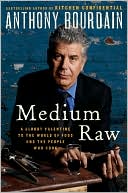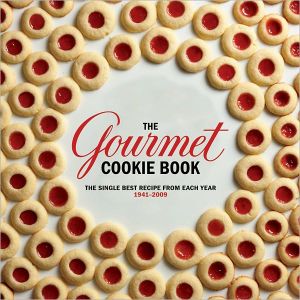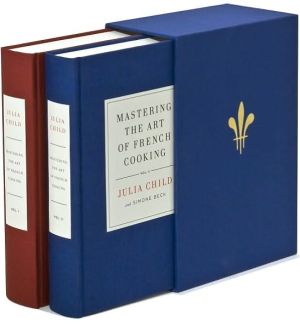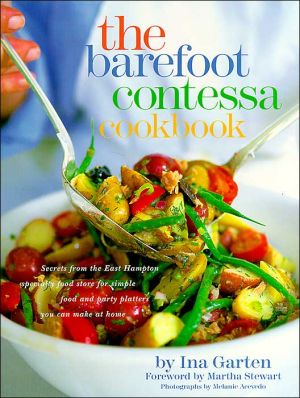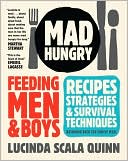97 Orchard: An Edible History of Five Immigrant Families in One New York Tenement
In 97 Orchard, Jane Ziegelman explores the culinary life that was the heart and soul of New York's Lower East Side around the turn of the twentieth century—a city within a city, where Germans, Irish, Italians, and Eastern European Jews attempted to forge a new life. Through the experiences of five families, all of them residents of 97 Orchard Street, she takes readers on a vivid and unforgettable tour, from impossibly cramped tenement apartments down dimly lit stairwells where children played...
Search in google:
In 97 Orchard, Jane Ziegelman explores the culinary life that was the heart and soul of New York's Lower East Side around the turn of the twentieth century—a city within a city, where Germans, Irish, Italians, and Eastern European Jews attempted to forge a new life. Through the experiences of five families, all of them residents of 97 Orchard Street, she takes readers on a vivid and unforgettable tour, from impossibly cramped tenement apartments down dimly lit stairwells where children played and neighbors socialized, beyond the front stoops where immigrant housewives found respite and company, and out into the hubbub of the dirty, teeming streets. Ziegelman shows how immigrant cooks brought their ingenuity to the daily task of feeding their families, preserving traditions from home but always ready to improvise. While health officials worried that pushcarts were unsanitary and that pickles made immigrants too excitable to be good citizens, a culinary revolution was taking place in the streets of what had been culturally an English city. Along the East River, German immigrants founded breweries, dispensing their beloved lager in the dozens of beer gardens that opened along the Bowery. Russian Jews opened tea parlors serving blintzes and strudel next door to Romanian nightclubs that specialized in goose pastrami. On the streets, Italian peddlers hawked the cheese-and-tomato pies known as pizzarelli, while Jews sold knishes and squares of halvah. Gradually, as Americans began to explore the immigrant ghetto, they uncovered the array of comestible enticements of their foreign-born neighbors. 97 Orchard charts this exciting process of discovery as it lays bare the roots of our collective culinary heritage. The Barnes & Noble Review Ziegelman isn't in the market to romanticize 97 Orchard. Her impeccable research won't permit it. At its best, the tenement was a stepping-stone, a cold-comfort place to circle your wagons and put some food on the campfire. When opportunity knocked, tenants got the hell out. But although Ziegelman's voice is smart, it is also smitten by lives reimagined so vividly you could smell them in the air, all that cabbage and onion and garlic. Orchard Street doesn't smell much any longer, nothing ripe to the point of deliquescence, shocking the nose. Some might think that's a shame.
AcknowledgmentsIntroductionOne The Glockner Family 1Two The Moore Family 47Three The Gumpertz Family 83Four The Rogarshevsky Family 125Five The Baldizzi Family 183Notes 229Bibliography 235Photo Credits 239Index 241
\ Dwight GarnerThe story…about Old World habits clashing and ultimately melding with new American ones, is familiar. But Ms. Ziegelman is a patient scholar and a graceful writer, and she rummages in these families' histories and larders to smart, chewy effect.\ —The New York Times\ \ \ \ \ William GrimesHighly entertaining and deceptively ambitious, the book resurrects the juicy details of breakfast, lunch and dinner (recipes included) consumed by poor and working-class New Yorkers a century and more ago. It could well have been subtitled "How the Other Half Ate"…Ziegelman adroitly works her way through the decades and her five cuisines. Along the way, there are fascinating diversions.\ —The New York Times Book Review\ \ \ Kirkus ReviewsThe director of the forthcoming Culinary Center at New York City's Tenement Museum embarks on a cultural and culinary tour of the building at 97 Orchard St., which serves as the museum's principal display. Ziegelman (co-author: Foie Gras: A Passion, 1999) offers the stories of five immigrant families who lived in the building sometime between 1863, when it opened, and 1935. The author's research is both astonishing in its dimensions and enlightening in its presentation. She begins with a German family, then follows with Irish, Jewish (from Prussia, Germany and Lithuania) and Italian families. Each chapter includes some of the recipes fundamental to that family. Readers will learn the procedures for making things like hasenpfeffer (rabbit stew), krupnik (a sweet alcohol), fish hash, oyster patties, stuffed pike, pickles, challah and zucchini frittata. Ziegelman digs out the personal history of each family, but she is most interested in their cultural milieu. She notes the forces-some unfriendly, others welcoming-that greeted the new arrivals, and includes a splendid section on the cuisine offered at Ellis Island. The author also examines how the food of the immigrants altered the eating habits of Americans (yes, there was a time when we disdained Italian food and didn't know what a bagel was), charts the rise of the delicatessen and describes the advent of Crisco. Scattered throughout are well-placed details that continually brighten the narrative, including a 1920 public-school menu, a portrait of the pushcart culture that thrived for years, the origin of schmaltz (the delectable grease from goose skin or chicken skin) and 1860s restaurant slang ("shipwreck" = scrambled eggs, "oneslaughter on the pan" = porterhouse steak). A tasty, satisfying stew of history, sociology, cultural anthropology and spicy prose. Author appearances in New York\ \ \ \ \ Publishers WeeklyZiegelman (Foie Gras: A Passion) puts a historical spin to the notion that you are what you eat by looking at five immigrant families from what she calls the "elemental perspective of the foods they ate." They are German, Italian, Irish, and Jewish (both Orthodox and Reform) from Russia and Germany--they are new Americans, and each family, sometime between 1863 and 1935, lived on Manhattan’s Lower East Side. Each represents the predicaments faced in adapting the food traditions it knew to the country it adopted. From census data, newspaper accounts, sociological studies, and cookbooks of the time, Ziegelman vividly renders a proud, diverse community learning to be American. She describes the funk of fermenting sauerkraut, the bounty of a pushcart market, the culinary versatility of a potato, as well as such treats as hamburger, spaghetti, and lager beer. Beyond the foodstuffs and recipes of the time, however, are the mores, histories, and identities that food evokes. Through food, the author records the immigrants’ struggle to reinterpret themselves in an American context and their reciprocal impact on American culture at large. (July)\ \ \ \ \ Library JournalNinety-seven Orchard was an address shared by five immigrant families who lived in one tenement building at different times from the end of the Civil War up to World War II. Ziegelman, who will direct the Culinary Center to open at New York's Tenement Museum, which is the actual 97 Orchard building, documents, in a manner not often found in such social histories, their struggles to adjust to a new way of life in America. Interspersed among the tales of each group are culinary details and specific recipes that add vividly to the flavor and texture of the descriptions of the hardscrabble life these families—German, Irish, Jewish, and Italian—experienced. The multitude of gastronomic details, from the origin of snack shops called delicatessens to the growing popularity of something called macaroni, are painstakingly described. It is an eye-opening exploration of the social and economic history of those who thrived and survived, in spite of significant odds, on New York's Lower East Side. VERDICT Recommended for those seeking up-close and personal—as well as edible—insights into the daily lives of late 19th- and early 20th-century "new Americans."—Claire Franek, MSLS, Brockport, NY\ \ \ \ \ The Barnes & Noble ReviewIt's posh now, Orchard Street on New York City's Lower East Side. Studio apartments go for upwards of a couple grand a month. The shops are rarified, the restaurants good and edgy. But what is now tony would, a century ago, have been Anthony, newly arrived from Calabria, who lived on Orchard Street because he couldn't find anything cheaper. If alone, he probably lived in a boardinghouse, packed like a sardine into one of those studios with a handful of other immigrants. If he had a family, he could well have lived at 97 Orchard Street.\ Anthony? Not Avraham? As culinary-historian Ziegelman explains in this illuminating, rangy, and wonderfully atmospheric book, though the Lower East Side is primarily identified with its Jewish community, it was the first port of call for many immigrants. This is the story of five families -- German, Irish, Jews from Germany and from the Pale, and Italian -- who lived in the tenement at 97 Orchard between the years 1863 and 1935. It is the story of Old World identities daily being beveled by their new surrounds, yet holding on to their food traditions (while appropriating agreeable new foodstuffs), as emotional ballast, a piece of the familiar in a strange land. It is, as well, an exploration into milieu, and all the forces that went into shaping everyday life.\ First on the scene, in 1863, was Lucas Glockner, a German tailor who, in an impressive arch, saved his pennies and bought a property, 97 Orchard, site of an old Dutch church. He knocked down the building and built anew -- same as it ever was. The five-story, Italianate structure had four 350-square-foot apartments per floor: kitchen, windowless sleeping room behind, and a parlor in front that was "not much bigger than a New York taxi." Glockner added warm touches; after all, he would be living there: ceilings of sky blue, walls painted salmon pink and pale mint, two fireplaces with wooden mantles and slate hearthstones. He skimped on indoor plumbing, however. Hitting the courtyard privy in the dead of winter was, perhaps, bracing, but carrying water from the pump up five flights must have been excruciating drudgery.\ Thus circumstances put a premium on simple, efficient cooking: one-pot dishes like fricassees and hasenpfeffer, a wild-rabbit ragout (sample recipes are included throughout the book). Mrs. Glockner did spontaneous shopping at the grocer's and serious shopping at the public market. But Mrs. Glockner can go only so far as a model before Ziegelman needs to branch out to cover regional German specialties such as jelly donuts, pike, and blood sausage; the role of beer gardens; the rise and fall of Vienna bread -- for starters. So, too, with the Moore family from Ireland. The chronicle of their diet -- oatmeal stirabout, potatoes, fish hash, corned beef -- is supplemented with investigative forays into work as a domestic, the residential purgatory of the Irish boardinghouse, the effects of Cromwell on the Irish landscape, and the potato famine. More than most immigrant groups, the Irish had an ambivalent attitude toward their customary foods, which waxed and waned along with anti-Irish sentiments and class snobbism, distancing themselves from corned beef, then embracing it. "The language of food, like any expressive medium, is never fixed but perpetually a work in progress."\ Natalie Gumpertz and her shoemaker husband Julius moved into the tenement in 1870. Natalie stayed until 1886, but Julius only lasted four years until he joined the ranks of "missing husbands," evidently unhinged by the strain of supporting his family. Natalie thereafter struggled to provide the kaleidoscopic, hybrid cuisine of her ancestors -- gefilte fish, bean soups, challah, boiled potatoes with imaginary fish for the very poor -- gathering her ingredients from the streetside pushcart market. If she were of the mind, Natalie could break kosher tradition thanks to the cultural movement of Haskalah, which encouraged an openness to change and a more relaxed approach to religious observance and dietary laws. Oysters, plentiful and inexpensive in New York City, could be eaten, as well as pork products, another New York mainstay (in 1850, some 20,000 porkers were policing the streets of the city). Said one Reformed epicure: "Moses never tasted Cincinnati ham. Had he done so, he would have commanded it to be eaten." Ziegelman notes other changes afoot. Schmaltz from tenement goose farms, which gave the hygiene inspectors the fantods, was being eclipsed by Crisco; gefilte fish was shaped into small loaves rather than the entire reassembled fish. Sabbath dinner would maintain its cosmic significance, the outward sign of a powerful relationship with God, mealtime as sacrament.\ In the 1880s came the Rogarshevskys, unambiguously Orthodox Russian Jews in flight from pogroms, for whom food signified piety as surely as study and prayer. The Rogarshevskys were of scant means, which allows Ziegelman a fuller inquiry into the pushcart markets, where one could buy small quantities of products for soups like borscht, krupnik, and schav, or a pickle sandwich, or a penny apple. The tenement became the new shtetl; the sharing of food between the poor was instinctual. Outside the tenement, Ziegelman serves forth every manner of eatery: Romanian Jews, the bon vivants of the ghetto, with their restaurant dance floors, smoked-goose pastrami, and sweet-and-sour tongue; tearooms for kibitzing; knish parlors; dairy restaurants, a response to the high cost of kosher meat, which had sparked riots in 1902; and private restaurants in the street-level parlor of tenements, catering provincial meals.\ Last to arrive were the Baldizzis, in the 1920s, illegal immigrants as a result of the new quota system. Though cold-water plumbing had been installed in 1902 (toilets remained communal) and, in 1920, electricity (but still no heat), 97 Orchard was by then a shadow of its former self, down to 25 residents from a high of 111 as immigration slowed. The neighborhood had become haunted, as landlords couldn't or wouldn't keep up properties, falling into sorry disrepair when not tumbledown, burnt-out, abandoned. From southern Italy, the Baldizzis -- Mr. was a cabinetmaker and stowaway; Mrs. a laundress with a doctored passport -- were typical persecutees, branded as lazy, ignorant, violent, and clannish, rag-pickers and shiftless organ-grinders, as were other southern Italians, kept at arm's length, denied basic civility, at times reduced to milk-soaked stale bread and pickings from the rich man's abundance of garbage, even as their foods slowly beguiled their persecutors: spaghetti, dense breads, pizza, confetti, olive oil, salads, snails, squid, eels.\ Ziegelman isn't in the market to romanticize 97 Orchard. Her impeccable research won't permit it. At its best, the tenement was a stepping-stone, a cold-comfort place to circle your wagons and put some food on the campfire. When opportunity knocked, tenants got the hell out. But although Ziegelman's voice is smart, it is also smitten by lives reimagined so vividly you could smell them in the air, all that cabbage and onion and garlic. Orchard Street doesn't smell much any longer, nothing ripe to the point of deliquescence, shocking the nose. Some might think that's a shame.\ --Peter Lewis\ \ \


